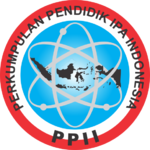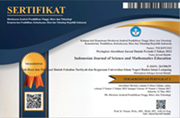Internet access at home and varied usage as determinants of South African students’ mathematics performance
Abstract
Keywords
Full Text:
PDFReferences
UNESCO, “Startling digital divides in distance learning emerge,” 2023. [Online]. Available: https://www.unesco.org/en/articles/startling-digital-divides-distance-learning-emerge. [Accessed: Nov. 27, 2023].
Statistics South Africa (StatsSA), “General Household Survey 2022,” StatsSA, 2023. [Online]. Available: https://www.statssa.gov.za/publications/P0318/P03182021.pdf. [Accessed: Nov. 27, 2023].
S. H. H. Al-Taai, H. A. Kanber, and W. A. M. al-Dulaimi, “The Importance of Using the Internet of Things in Education,” Int. J. Emerg. Technol. Learn. (Online), vol. 18, no. 1, p. 19, 2023. [Online]. Available: https://doi.org/10.3991/ijet.v18i01.35999.
A. Shala and A. Grajcevci, “ICT and Internet Usage among Kosovar Students: The Impact of Trends on Achievement in the PISA Scales,” J. Learn. Dev., vol. 10, no. 1, pp. 122–133, 2023. https://files.eric.ed.gov/fulltext/EJ1383657.pdf
G. M. Kruger, “The relationship between investment in ICT and mathematics achievement [Unpublished doctoral dissertation],” University of Pretoria, 2018. [Online]. Available: https://repository.up.ac.za/bitstream/handle/2263/67752/Kruger_Relationship_2018.pdf?sequence=1&isAllowed=y. [Accessed: May 11, 2023].
C. O. Güzeller and A. Akin, “Relationship between ICT Variables and Mathematics Achievement Based on PISA 2006 Database: International Evidence,” Turkish Online J. Educ. Technol.-TOJET, vol. 13, no. 1, pp. 184–192, 2014. https://www.learntechlib.org/p/153655/.
C. Namome and M. Moodley, “ICT in mathematics education: An HLM analysis of achievement, access to and use of ICT by African Middle School Students,” SN Soc. Sci., vol. 1, no. 9, p. 224, 2021. https://doi.org/10.1007/s43545-021-00230-6
P. E. Saal, L. van Ryneveld, and M. A. Graham, “The Relationship between using Information and Communication Technology in Education and the Mathematics Achievement of Students,” Int. J. Instr., vol. 12, no. 3, pp. 405–424, 2019. https://doi.org/10.29333/iji.2019.12325a
M. McKeever, “Educational inequality in apartheid South Africa,” Am. Behav. Sci., vol. 61, no. 1, pp. 114–131, 2017. [Online]. Available: https://doi.org/10.1177/0002764216682988.
D. Grant, “Media Release Minister of Education Donald Grant Western Cape: Background to the national quintile system,” 2013. [Online]. Available: https://wcedonline.westerncape.gov.za/comms/press/2013/74_14oct.html. [Accessed: Nov. 16, 2023].
Department of Education, “National norms and standard for school funding,” 2004. [Online]. Available: https://www.education.gov.za/Portals/0/Documents/Legislation/Call%20for%20Comments/NATIONAL%20NORMS%20AND%20STANDARDS%20FOR%20SCHOOL%20FUNDING.pdf?ver=2008. [Accessed: June 8, 2022].
V. Reddy et al., “The South African TIMSS 2019 Grade 9 Results: Building Achievement and Bridging Achievement Gaps,” HSRC Press, Cape Town, 2022.
A. Van Zyl, E. M. Webb, and J. E. Wolvaardt, “Striving for equity: Life orientation resources in South African high schools,” South African Journal of Education, vol. 41, no. 1, 2021. [Online]. Available: http://dx.doi.org/10.15700/saje.v41n1a1830.
Z. K. Szabo et al., “Examples of Problem-Solving Strategies in Mathematics Education Supporting the Sustainability of 21st-Century Skills,” Sustainability, vol. 12, 10113, 2020. [Online]. Available: https://doi.org/10.3390/su122310113.
L. English and J. Gainsburg, “Problem solving in a 21st-century mathematics curriculum,” in Handbook of international research in mathematics education, 3rd ed., L. D. English and D. Kirshner, Eds. Routledge, United States of America, 2016, pp. 313-335.
OECD, “Education Policy Analysis,” OECD Publishing, Paris, France, 2001. [Online]. Available: https://one.oecd.org/document/PAC/COM/NEWS(2001)25/En/pdf.
K. Maass et al., “The Role of Mathematics in interdisciplinary STEM education,” ZDM Mathematics Education, vol. 51, pp. 869–884, 2019. [Online]. Available: https://doi.org/10.1007/s11858-019-01100-5.
Y.M. Mazana, C.S. Montero, and R.O. Casmir, “Investigating Students’ Attitude towards Learning Mathematics,” International Electronic Journal of Mathematics Education, vol. 14, no. 1, pp. 207-231, 2019. https://doi.org/10.29333/iejme/3997
A. N. Harahap et al., “Analysis of students' critical thinking skills in solving mathematics problems in terms of students' initial ability,” Indonesian Journal of Science and Mathematics Education, vol. 7, no. 1, pp. 39-52, 2024. http://ejournal.radenintan.ac.id/index.php/IJSME/article/view/18014
J. Enu, O. K. Agyman, and D. Nkum, “Factors influencing students’ mathematics performance in some selected colleges of education in Ghana,” International Journal of Education Learning and Development, vol. 3, no. 3, pp. 68-74, 2015. https://www.eajournals.org/wp-content/uploads/Factors-Influencing-Students-Mathematics-Performance-In-Some-Selected-Colleges-Of-Education-In-Ghana.pdf
N. Wardani and T. J. Siregar, “The Development of HOTS (Higher-Order Thinking Skills) Assessment Instrument Based on Numeration Literacy in Mathematics for Junior High School,” Indonesian Journal of Science and Mathematics Education, vol. 6, no. 2, pp. 238-252, 2023. http://ejournal.radenintan.ac.id/index.php/IJSME/article/view/17433
E. Yurt, “The Predictive Power of Self-Efficacy Sources for Mathematics Achievement,” Education and Science, vol. 39, no. 176, pp. 159-169, 2014. [Online]. Available: https://doi.org/10.15390/eb.2014.3443.
I. V. S. Mullis et al., “TIMSS 2019 International Results in Mathematics and Science,” 2020. [Online]. Available: https://timssandpirls.bc.edu/timss2019/international-results/.
Department of Basic Education (DBE), “2023 NSC Exam Results Technical Report,” 2024. [Online]. Available: https://www.education.gov.za/Portals/0/Documents/Reports/2021NSCReports/NSC23%20Technical%20Report.pdf?ver=2024-01-18-161615-123.
A. Çebi and T. Güyer, “Students’ interaction patterns in different online learning activities and their relationship with motivation, self-regulated learning strategy and learning performance,” Education and Information Technologies, vol. 25, no. 6, pp. 3975–3993, 2020. [Online]. Available: https://doi.org/10.1007/s10639-020-10151-.
OECD, “Students, Computers and Learning: Making the Connection,” OECD Publishing, Paris, 2015. [Online]. Available: http://dx.doi.org/10.1787/9789264239555-en.
D. Rozgonjuk, K. Täht, and K. Vassil, “Internet use at and outside of school in relation to low- and high-stakes mathematics test scores across 3 years,” IJ STEM Ed, vol. 8, 27, 2021. [Online]. Available: https://doi.org/10.1186/s40594-021-00287-y.
P. E. Saal, M. A. Graham, and L. Van Ryneveld, “The Relationship between Integrating Educational Technology in Mathematics Education and the Mathematics Achievement of German Students,” Eurasia Journal of Mathematics, Science and Technology Education, vol. 16, no. 12, 2020. [Online]. Available: https://doi.org/10.29333/ejmste/8939.
P.E. Saal, L. van Ryneveld, and M.A. Graham, “Comparing the relationship between using educational technology in mathematics and student achievement in South Africa and Germany,” Journal of Research on Technology in Education, vol. 54, no. 4, pp. 581-598, 2022. [Online]. Available: https://doi.org/10.1080/15391523.2021.1904062.
A. Posso, “Internet usage and educational outcomes among 15-year old Australian students,” International Journal of Communication, vol. 10, 26, 2016. https://ijoc.org/index.php/ijoc/article/view/5586/1742
O. Falck, C. Mang, and L. Woessmann, “Virtually no effect? Different uses of classroom computers and their effect on student achievement,” Oxford Bulletin of Economics and Statistics, vol. 80, no. 1, pp. 1–38, 2018. [Online]. Available: https://doi.org/10.1111/obes.12192
Y. Zhang and Q. Wang, “Content learning opportunities, computer based instruction, and students’ mathematics and science achievement,” International Journal of Mathematical Education in Science and Technology, vol. 51, no. 8, pp. 1–18, 2020. [Online]. Available: https://doi.org/10.1080/0020739X.2020.1717659.
U. Bronfenbrenner, “Toward an experimental ecology of human development,” The American Psychologist, vol. 32, no. 7, pp. 513–531, 1977. https://psycnet.apa.org/doi/10.1037/0003-066X.32.7.513
U. Bronfenbrenner and S.J. Ceci, “Nature-Nurture Reconceptualized in Developmental Perspective: A Bioecological Model,” Psychological Review, vol. 101, no. 4, pp. 568-586, 1994. https://doi.org/10.1037/0033-295x.101.4.568
S. LaRoche and P. Foy, “Sample implementation in TIMSS 2019,” in TIMSS 2019 Technical Report, M. O. Martin, M. von Davier, and I. V. S. Mullis, Eds. 2020. [Online]. Available: https://timssandpirls.bc.edu/timss2019/methods/chapter-9.html.
S. LaRoche, M. Joncas, and P. Foy, “Sample design in TIMSS 2019,” in TIMSS 2019 Technical Report, M. O. Martin, M. von Davier, and I. V. S. Mullis, Eds. 2020. [Online]. Available: https://timssandpirls.bc.edu/timss2019/methods/chapter-3.html.
K. E. Cotter, V. A. S. Centurino, and I. V. S. Mullis, “Developing the TIMSS 2019 mathematics and science achievement instruments,” in TIMSS 2019 Technical Available: https://timssandpirls.bc.edu/timss2019/methods/chapter-1.html.
S. W. Raudenbush and A. S. Bryk, Hierarchical linear models: Applications and data analysis methods, 2nd ed. Thousand Oaks, CA: Sage, 2002.
Y. Suryono, “Teacher's Achievement in Curriculum 2013 Training: A Hierarchical Linear Model,” International Journal of Instruction, vol. 15, no. 1, pp. 891-910, 2022. https://doi.org/10.29333/iji.2022.15151a
R. J. Little and D. B. Rubin, Statistical analysis with missing data, Vol. 793. John Wiley & Sons, 2019.
Y. Dong and C. Y. J. Peng, “Principled missing data methods for
researchers,” SpringerPlus, vol. 2, 1-17, 2013. https://doi.org/10.1186/2193-1801-2-222
L. Rutkowski, E. Gonzalez, M. Joncas, and M. von Davier, “International Large-scale Assessment Data: Issues in Secondary Analysis and Reporting,” Educational Researcher, vol. 39, pp. 142-151, 2010. https://doi.org/10.3102/0013189X10363170
DOI: http://dx.doi.org/10.24042/ijsme.v8i1.21855
Refbacks
- There are currently no refbacks.
Copyright (c) 2025 Unit Riset dan Publikasi Ilmiah FTK UIN Raden Intan Lampung

This work is licensed under a Creative Commons Attribution-ShareAlike 4.0 International License.

Indonesian Journal of Science and Mathematics Education is licensed under a Creative Commons Attribution-ShareAlike 4.0 International License.




